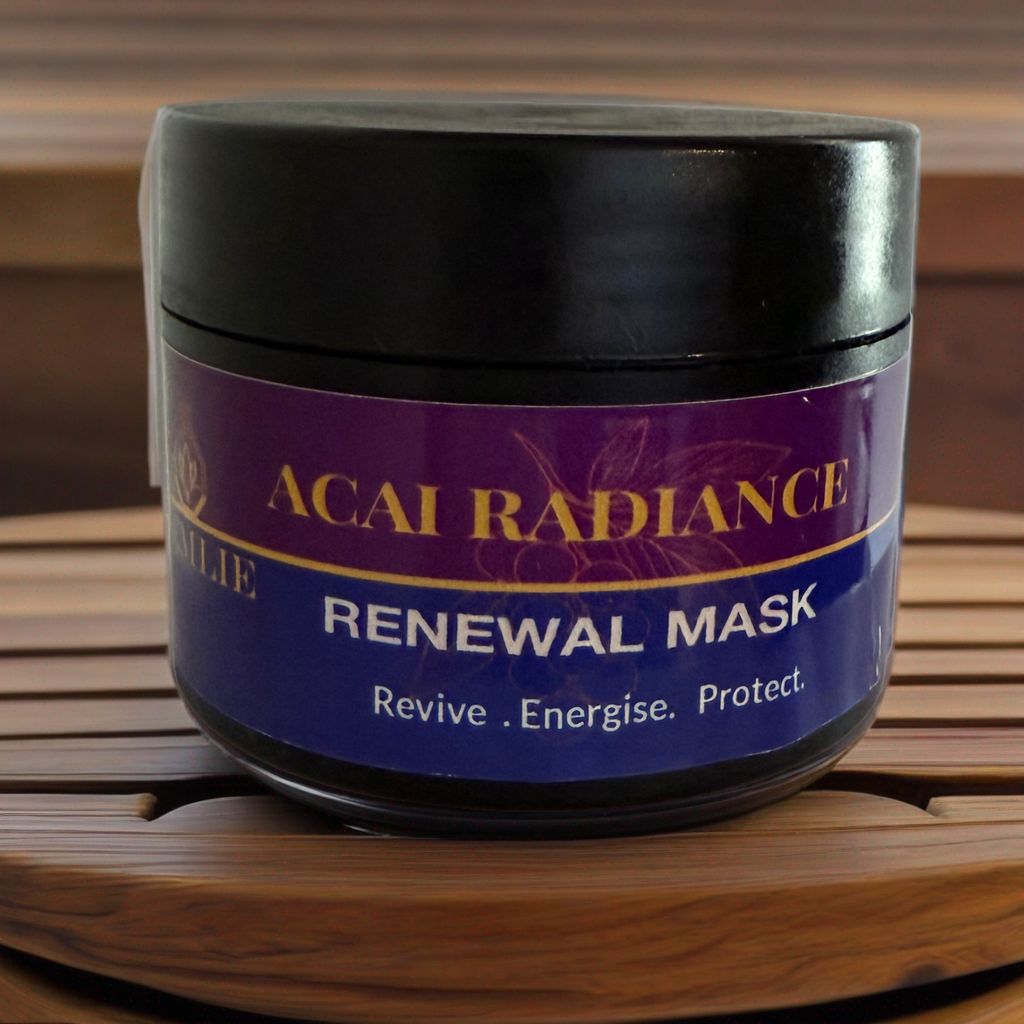Welcome to your ultimate guide to natural deodorants! If you're looking to stay fresh and natural, you've come to the right place. In this article, we'll explore the benefits, tips, and top product recommendations for embracing a more natural approach to odor control.
Natural deodorants have gained popularity in recent years as people become more conscious of the potential health risks associated with traditional antiperspirants. They offer a safer and healthier alternative, free from harsh chemicals like aluminum, parabens, and phthalates.
One of the main advantages of natural deodorants is that they allow your body to function as it was designed to, by allowing you to sweat naturally while neutralizing odor. Many natural deodorants are also cruelty-free and environmentally friendly, making them a perfect choice for those who care about ethical and sustainable practices.
In this guide, we'll provide tips on how to transition to natural deodorants and make them effective for you. We'll also recommend our top picks for the best natural deodorant brands on the market today. So, get ready to enhance your self-care routine with a fresh and natural approach.
Why switch to natural deodorants?
For years, many of us have relied on traditional antiperspirants and deodorants to control body odor and keep us feeling fresh throughout the day. However, as we become more conscious of the potential health and environmental implications of the chemicals found in these products, the demand for natural alternatives has been steadily rising.
The primary reason to switch to natural deodorants is the concern over the safety of conventional deodorant ingredients. Many traditional deodorants contain aluminum-based compounds, which have been linked to potential health issues such as an increased risk of breast cancer and Alzheimer's disease. Additionally, parabens and phthalates, which are commonly used as preservatives and fragrance carriers, have been associated with hormonal disruptions and other negative health effects.
By making the switch to natural deodorants, you can avoid these potentially harmful chemicals and embrace a more holistic approach to personal care. Natural deodorants typically use plant-based ingredients, such as essential oils, baking soda, and mineral salts, to neutralize odor-causing bacteria without blocking sweat glands or interfering with your body's natural detoxification process. This allows your body to function as it was designed, promoting overall health and well-being.
The benefits of using natural deodorants
One of the primary benefits of using natural deodorants is the absence of aluminum, which is a common ingredient in traditional antiperspirants. Aluminum works by blocking sweat glands and preventing the release of perspiration, but this can lead to a buildup of toxins in the body and has been linked to potential health concerns.
Natural deodorants, on the other hand, work by neutralizing odor-causing bacteria without interfering with the body's natural sweating process. This allows your body to continue releasing toxins through perspiration, which is an essential part of the body's natural detoxification system. As a result, natural deodorants can help support overall health and well-being, while still keeping you feeling fresh and confident throughout the day.
Another significant benefit of natural deodorants is their environmental friendliness. Many conventional deodorants contain synthetic fragrances, parabens, and other chemicals that can be harmful to the environment, particularly when washed down the drain or disposed of improperly. Natural deodorants, on the other hand, are often made with biodegradable, plant-based ingredients that are less damaging to the planet. This makes them a more sustainable choice for those who are conscious of their environmental impact.
Understanding the difference between natural and conventional deodorants
The primary difference between natural and conventional deodorants lies in their active ingredients and the way they work to control body odor.
Conventional deodorants, including most commercial antiperspirants, typically contain aluminum-based compounds that work by blocking sweat glands and preventing the release of perspiration. This can lead to a buildup of toxins in the body, as well as potential health concerns associated with aluminum exposure. Conventional deodorants may also contain synthetic fragrances, parabens, and other chemical preservatives that can be irritating to the skin and have negative environmental impacts.
In contrast, natural deodorants rely on a different approach to odor control. They often contain plant-based ingredients, such as baking soda, essential oils, and mineral salts, that work to neutralize odor-causing bacteria without interfering with the body's natural sweating process. Natural deodorants allow your body to continue releasing toxins through perspiration, which is an essential part of the body's detoxification system. Additionally, natural deodorants are typically free from synthetic fragrances, parabens, and other potentially harmful chemicals, making them a safer and more environmentally friendly choice.
Common ingredients to avoid in deodorants
When transitioning to natural deodorants, it's important to be aware of the common ingredients found in conventional deodorants that you may want to avoid. These include:
Aluminum: As mentioned earlier, aluminum-based compounds are the primary active ingredient in most commercial antiperspirants, and they work by blocking sweat glands to prevent perspiration. However, there are concerns about the potential health risks associated with aluminum exposure, including a possible link to breast cancer and Alzheimer's disease.
Parabens: Parabens are a class of preservatives commonly used in personal care products, including deodorants, to prevent the growth of bacteria and extend the product's shelf life. However, parabens have been linked to hormonal disruptions and have been detected in breast cancer tumors, leading to concerns about their safety.
Phthalates: Phthalates are a group of chemicals used to add fragrance and improve the texture of personal care products. They have been associated with endocrine disruption, reproductive issues, and other health concerns.
Synthetic fragrances: Many conventional deodorants contain synthetic fragrances, which can be made up of a complex mixture of chemicals. These fragrances have been linked to skin irritation, allergic reactions, and potential hormone disruption.
By avoiding these potentially harmful ingredients and opting for natural deodorants that use plant-based, non-toxic alternatives, you can make a more informed and safer choice for your personal care routine.
Tips for transitioning to natural deodorants
Making the switch from conventional to natural deodorants can be a bit of an adjustment, but with the right approach, you can ensure a smooth transition. Here are some tips to help you successfully incorporate natural deodorants into your daily routine:
Start with a clean slate: Before trying a new natural deodorant, it's a good idea to give your underarms a break from any conventional deodorants or antiperspirants. This can help your body adjust to the natural deodorant more effectively.
Experiment with different formulas: Not all natural deodorants are created equal, and what works for one person may not work for another. Try out a few different natural deodorant brands and formulas to find the one that works best for your body and preferences.
Be patient during the transition period: It's common for your body to go through an adjustment period when switching to natural deodorants, as it may take some time for your body to adapt to the new ingredients and stop producing as much sweat and odor. Stick with it, and you'll likely see improvements over time.
Apply the deodorant correctly: Follow the instructions on your natural deodorant and apply it to clean, dry skin for best results. Some natural deodorants may require more frequent application, especially during the initial transition period.
Consider your diet and lifestyle: Your diet, stress levels, and overall health can all impact body odor. Focusing on a healthy, balanced diet, staying hydrated, and managing stress can all help support the effectiveness of your natural deodorant.
By following these tips and being patient with the transition process, you can successfully incorporate natural deodorants into your daily routine and enjoy the benefits of a fresh, healthy approach to odor control.
How to choose the right natural deodorant for you
With the growing popularity of natural deodorants, the market is flooded with a wide variety of options. Choosing the right natural deodorant for your individual needs can be a bit of a challenge, but here are some factors to consider:
Ingredients: Look for natural deodorants that use plant-based, non-toxic ingredients, such as baking soda, arrowroot powder, coconut oil, and essential oils. Avoid deodorants that contain aluminum, parabens, phthalates, and synthetic fragrances.
Scent preferences: Natural deodorants often feature a variety of scents, from fresh and citrusy to earthy and floral. Consider your personal fragrance preferences and choose a scent that you find pleasant and uplifting.
Skin sensitivity: If you have sensitive skin, look for natural deodorants that are free from irritating ingredients, such as baking soda or certain essential oils. Some natural deodorants are formulated specifically for sensitive skin.
Application method: Natural deodorants come in various application forms, including sticks, creams, and sprays. Consider which method you find most convenient and comfortable to use.
Efficacy: While natural deodorants work differently than conventional antiperspirants, they should still be able to effectively neutralize odor and keep you feeling fresh throughout the day. Read reviews and consider trying out a few options to find the one that works best for your body.
Packaging and sustainability: If you're conscious of your environmental impact, look for natural deodorants that come in recyclable or compostable packaging, or opt for refillable options to reduce waste.
By taking the time to consider these factors, you can find the natural deodorant that best suits your individual needs and preferences, helping you transition to a more natural and sustainable personal care routine.
Top product recommendations for natural deodorants
As you explore the world of natural deodorants, here are some of our top product recommendations to consider:
Schmidt's Natural Deodorant: This brand offers a wide range of natural deodorant formulas, including options for sensitive skin, as well as unique scents like Charcoal + Magnesium and Jasmine Tea. Their products are aluminum-free, vegan, and cruelty-free.
Native Deodorant: Native uses a blend of natural ingredients, including baking soda, coconut oil, and shea butter, to provide effective odor protection. They offer a variety of scents, as well as unscented options, and their products are free from aluminum, parabens, and phthalates.
Primal Pit Paste: Primal Pit Paste is a natural deodorant brand that uses a simple, yet effective formula of organic, plant-based ingredients. Their products are available in stick and jar formats, with scents ranging from lavender to charcoal.
Tom's of Maine Natural Deodorant: Tom's of Maine has been a pioneer in the natural personal care industry for decades. Their natural deodorants are aluminum-free and made with ingredients like hops, sage, and rosemary.
Arm & Hammer Essentials Natural Deodorant: This budget-friendly option from Arm & Hammer uses baking soda and natural plant extracts to neutralize odor. It's a great introductory natural deodorant for those on a tighter budget.
Kopari Aluminum-Free Deodorant: Kopari's natural deodorant features a coconut oil-based formula that provides long-lasting freshness without the use of aluminum or other synthetic ingredients.
Meow Meow Tweet Deodorant: This small-batch, artisanal brand offers natural deodorants in unique scents like Grapefruit & Rosemary and Lavender & Sage. Their products are vegan, cruelty-free, and packaged in compostable paper tubes.
Remember, the "best" natural deodorant for you will depend on your personal preferences, skin type, and body chemistry, so be sure to experiment with a few options to find the one that works most effectively for you.
DIY natural deodorant recipes
If you're feeling adventurous and want to take a more hands-on approach to your natural deodorant routine, consider trying your hand at making your own DIY natural deodorant. Not only is it a fun and rewarding project, but it also allows you to have complete control over the ingredients and customize the formula to your specific needs.
Here are a few simple DIY natural deodorant recipes to get you started:
Basic Baking Soda Deodorant:
1/2 cup baking soda
1/2 cup coconut oil (softened)
10-15 drops of your favorite essential oil (optional)
Mix the baking soda and coconut oil together until well combined. Add a few drops of your chosen essential oil, if desired, for a pleasant scent. Store the mixture in a clean, airtight container and apply a small amount to your underarms as needed.
Coconut Oil and Arrowroot Powder Deodorant:
1/4 cup coconut oil (softened)
1/4 cup arrowroot powder
2 tablespoons baking soda
10-15 drops of your favorite essential oil (optional)
In a small bowl, mix together the coconut oil, arrowroot powder, and baking soda until a smooth, creamy consistency is achieved. Add your chosen essential oil, if desired. Spoon the mixture into a clean, empty deodorant container or jar and use as needed.
Magnesium and Shea Butter Deodorant:
1/4 cup magnesium oil
1/4 cup shea butter
2 tablespoons baking soda
10-15 drops of your favorite essential oil (optional)
Melt the shea butter in a double boiler or microwave, then stir in the magnesium oil and baking soda until well combined. Add your chosen essential oil, if desired. Pour the mixture into a clean, empty deodorant container or jar and allow it to cool and harden before use.
Remember to do a patch test with any new DIY deodorant recipe to ensure it doesn't cause skin irritation. Additionally, be mindful of the shelf life of your homemade deodorant and store it in a cool, dry place to maintain its effectiveness.
Frequently asked questions about natural deodorants
Q: Are natural deodorants as effective as conventional deodorants?
A: Natural deodorants work differently than conventional antiperspirants, as they focus on neutralizing odor-causing bacteria rather than blocking sweat glands. While they may not provide the same level of wetness protection, many natural deodorants can be just as effective at controlling body odor when used consistently.
Q: Do natural deodorants allow you to sweat?
A: Yes, natural deodorants are designed to allow your body to sweat naturally, as sweating is an important part of the body's natural detoxification process. Natural deodorants work by neutralizing odor-causing bacteria rather than preventing perspiration.
Q: How long does it take to adjust to a natural deodorant?
A: The transition period from conventional to natural deodorants can vary from person to person, but it typically takes a few weeks to a month for your body to adjust. During this time, you may experience increased sweating or odor, but with patience and consistency, your body will adapt, and the natural deodorant should become more effective.
Q: Can natural deodorants stain clothing?
A: Some natural deodorants, particularly those containing baking soda or certain oils, may be more prone to leaving white or discolored marks on clothing. To minimize this, apply the deodorant to clean, dry skin and allow it to fully absorb before getting dressed. You can also try using a natural deodorant with a lighter formula or one that is specifically designed to be non-staining.
Q: Are natural deodorants safe for sensitive skin?
A: Many natural deodorants are formulated with sensitive skin in mind, using gentle, non-irritating ingredients. However, individual skin types can still react differently to certain natural ingredients, such as baking soda or essential oils. It's always a good idea to do a patch test before using a new natural deodorant, especially if you have known skin sensitivities.
Q: How do I store my natural deodorant?
A: Natural deodorants, especially those in cream or paste form, are best stored in a cool, dry place, away from direct sunlight. Exposure to heat or moisture can cause the formula to separate or become less effective. If your natural deodorant starts to harden or become difficult to apply, you can try gently warming it up by placing the container in a bowl of warm water.
Conclusion: Embracing a fresh and natural lifestyle with natural deodorants
As we've explored in this comprehensive guide, making the switch to natural deodorants can be a transformative step in embracing a fresh and natural lifestyle. By avoiding the potentially harmful chemicals found in conventional deodorants and antiperspirants, you can take control of your personal care routine and support your overall health and well-being.
The benefits of using natural deodorants are multifaceted - from allowing your body to function as it was designed, to reducing your environmental impact, to providing a safer, gentler option for sensitive skin. And with the wide variety of natural deodorant products and DIY recipes available, you can easily find the perfect solution to suit your individual needs and preferences.
Remember, the transition to natural deodorants may take some time and experimentation, but with patience and an open mind, you'll be well on your way to enjoying the fresh, confident feeling that comes with embracing a more natural approach to odor control.
So, take the leap and start your journey towards a healthier, more sustainable personal care routine. Your body, and the planet, will thank you.






















